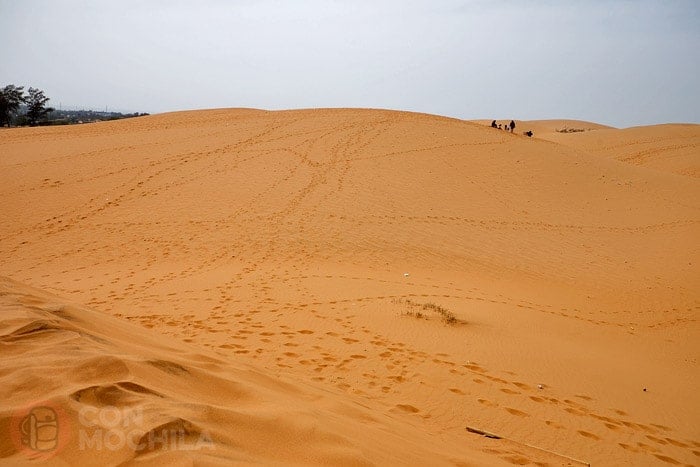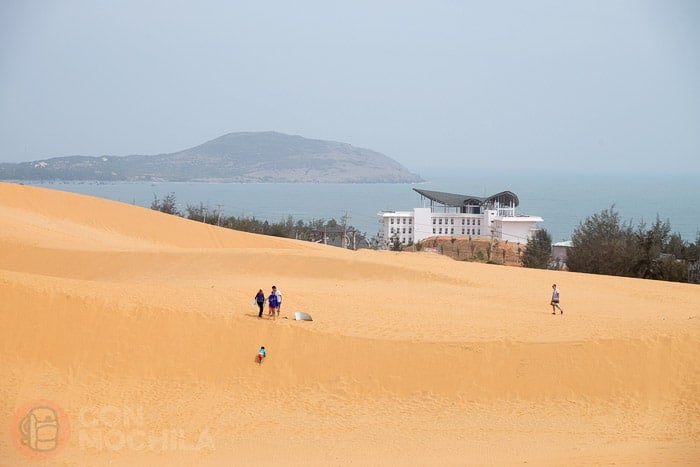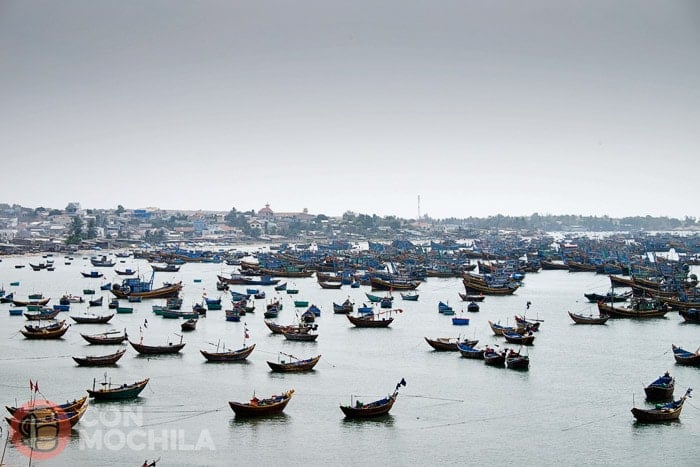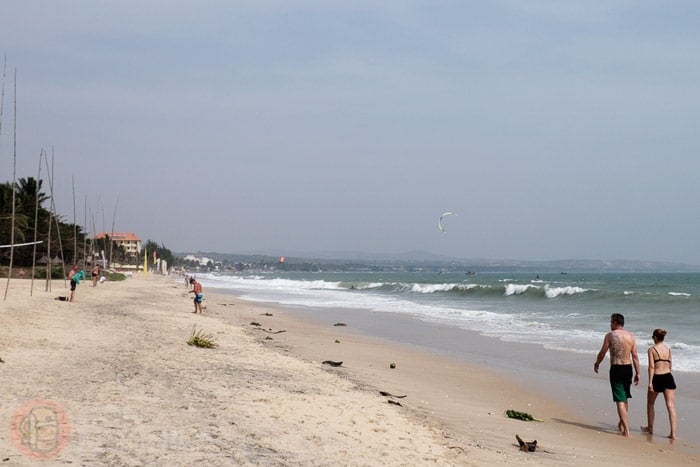One of the highlights of Vietnam‘s southern coast is its ideal conditions for sports like surfing and kitesurfing. A particularly famous destination for this is Mui Ne, a long stretch of coastline near a small fishing village, located 22 km east of Phan Thiet.
However, for those of us who don’t surf (or haven’t dared to try yet), Mui Ne is also known for its massive red sand dunes, located north of the village. Wanting to see them before the heat became unbearable, we set out early in the morning.
The weather was noticeably different from previous days. We realized over breakfast at the guesthouse that it was finally time to bring out the shorts again!
We hopped on the motorbike and covered the short distance between the beach and the red sand dunes. You can spot them from the road—it almost feels as if these enormous dunes were just randomly placed there, an unexpected sight in the middle of a tropical climate zone.

As soon as we parked the motorbike, children appeared out of nowhere, offering us plastic sleds to slide down the dunes.
Though it looked fun, we politely declined and stepped into this mini desert, still in awe of the contrast between the towering sand dunes and the ocean, which was just a few kilometers to the east.
From where we stood, we could even spot fishermen’s boats in the distance.

Despite the popularity of the dunes, we saw surprisingly few people. Just a handful of Vietnamese families, along with the local kids who, seeing that there weren’t many customers at the moment, were having fun sledding down the dunes themselves.
We also noticed groups of friends taking advantage of the picturesque scenery, posing for photos and selfies. A trend we quickly joined in on, taking plenty of silly pictures ourselves!
The area around Mui Ne has much more to offer, including the white sand dunes, Bau Trang Lake (20 km away), a Cham tower, and the Fairy Stream, which Toni had already visited before.
However, with the high temperatures and little motivation to ride the motorbike that day, we decided instead to head back to the beach for a drink.
On the way, we passed through Lang Chai, the port area full of fishing boats and the traditional round Vietnamese boats known as thung chai. This time, we couldn’t resist stopping to take some photos.

After having lunch near our guesthouse, we walked along the avenue parallel to the coast, hoping to find a nice stretch of beach where we could relax for a while and enjoy ourselves.
However, we were surprised to discover that Mui Ne’s several kilometers of beach were entirely occupied by hostels and resorts, making it difficult to access the sea.
We managed to find two small paths leading to the shore—one took us to a narrow strip of beach with barely any sand, while the other led to an area completely taken over by kitesurfers.
Our excitement was short-lived; Mui Ne was not going to be the beach destination we had imagined.
So, during our day and a half stay, we spent most of the time updating the blog, sipping beers, and taking short walks to find something to eat. At least the food options were fantastic, thanks to the area’s thriving tourism industry.

Despite the slight disappointment of realizing that the beach was practically inaccessible unless you were staying right on the seafront (a minor setback, as Thailand was already on our minds and it wouldn’t be long before we set foot on its beaches again), we still recommend visiting Mui Ne.
The red and white sand dunes are truly a unique sight in Southeast Asia.Two days later, we continued our journey, with Ho Chi Minh City already on the horizon.
If you’re looking for other accommodation options in Mui Ne, we recommend using this price comparison tool to find the cheapest deals.